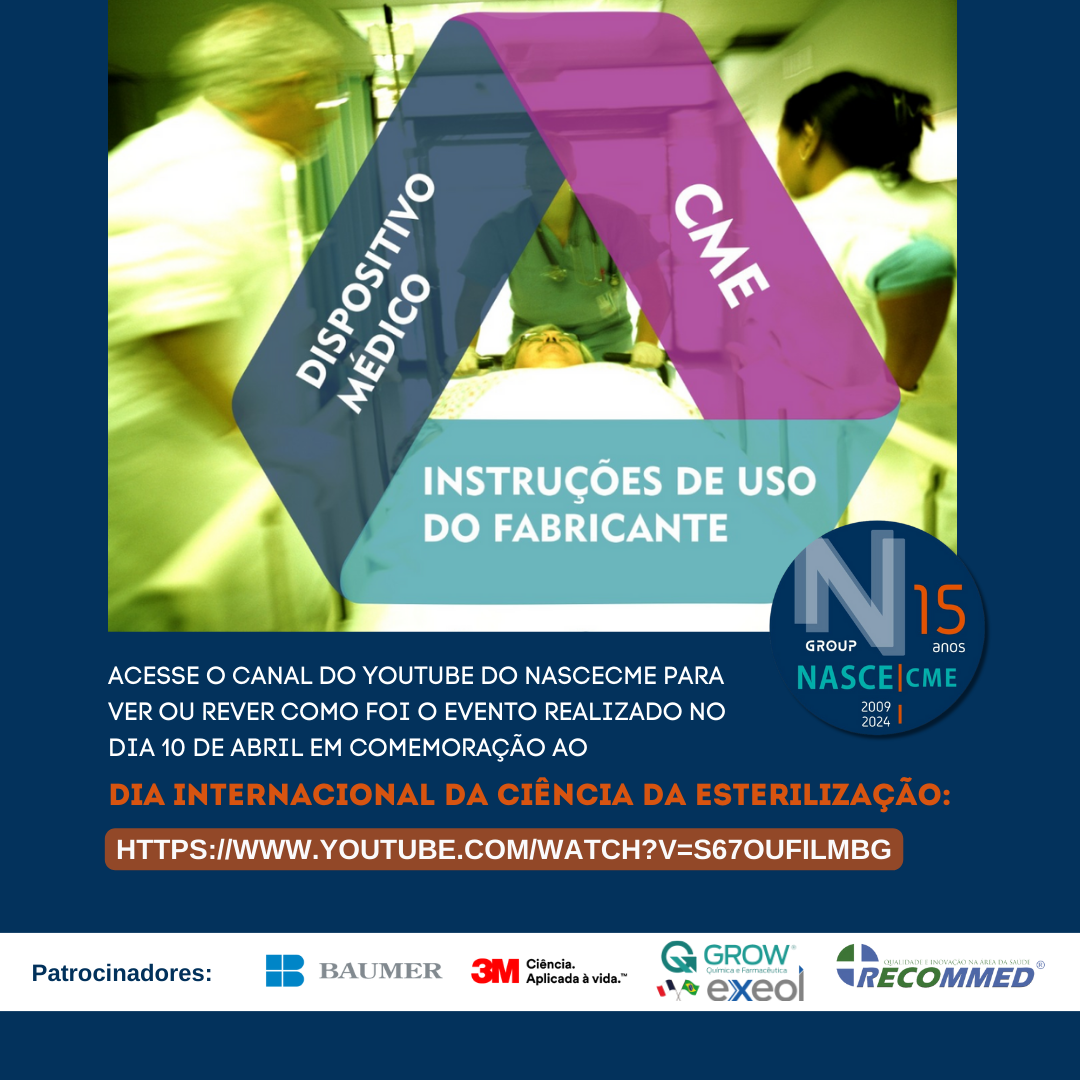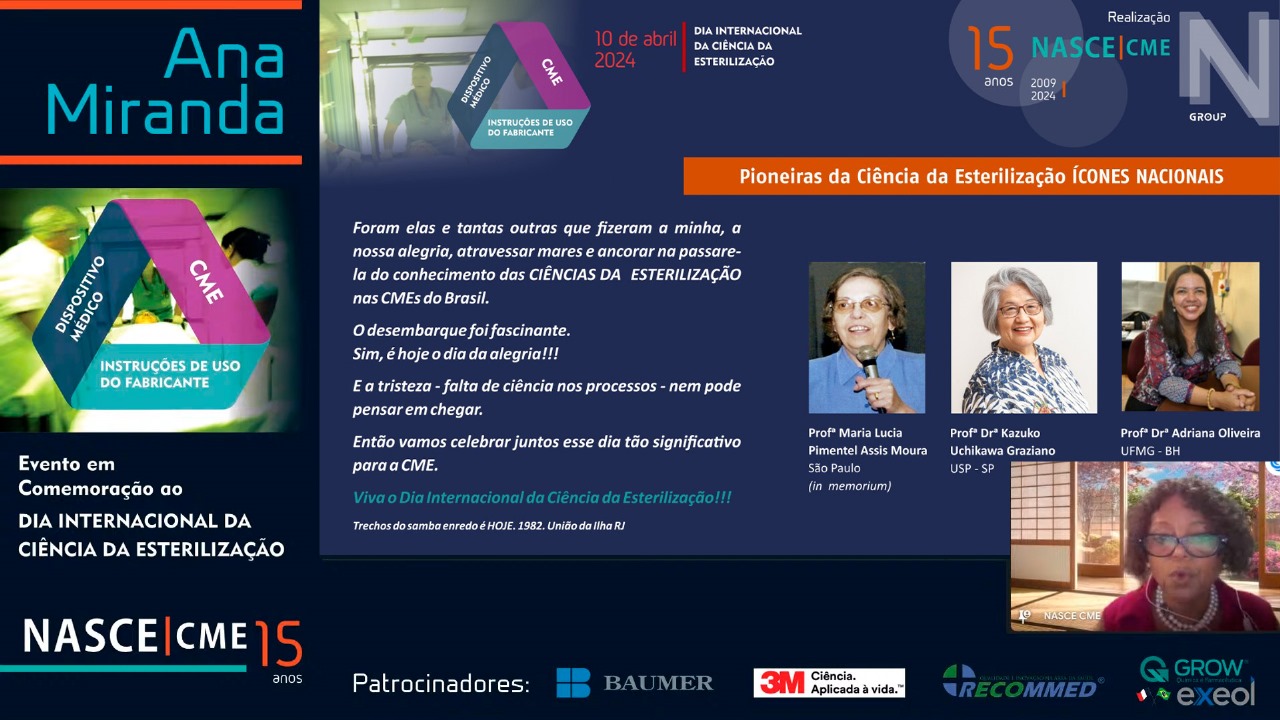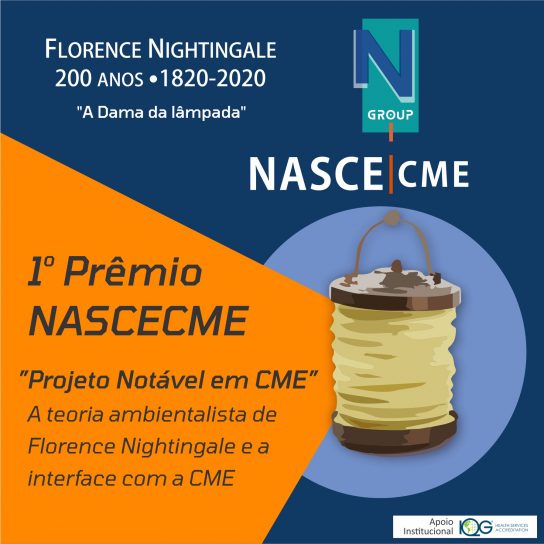Jim Gauthier
Email: bi@meiko.de
PROFESSIONAL EXPERIENCE
Infection Control Practitioner (ICP)
October 2003 – Present, Providence Care, KingstonON
- Full time ICP in a four person department for St. Mary’s of the Lake (Chronic care/Rehabilitative Medicine/Geriatric Assessment /Palliative Care – 136 beds) and Mental Health Services (170 beds).
- Duties Include:
- Conduct education, surveillance, policy development, and outbreak control.
Act as resource for the affiliated Long Term Care facility of the corporation.
O Nasce foi agraciado com uma entrevista com o Prof.Jim Gauthier, renomado estudioso do Canadá que abordou um tema bastante atual ,infecção por Clostridium difficille.Aceitou prontamente o nosso convite e com objetividade nas respostas ele nos abrilhantou dividindo conosco seu amplo conhecimento a cerca do tema.
Prof. Jim Gauthier, agradecemos a sua disponibilidade,ensinamentos e confiança no nosso trabalho!!!
Confira a entrevista e conheça um pouco mais do Jim Gauthier acessando seu curriculum.
NASCE:Quando a comunidade científica passou a dar mais importância as infecções por Clostridium difficile(CD)?
Jim Gauthier: CD foi reconhecido como causa de colite pseudomembranose ainda em 1974. Existem inúmeros artigos sobre o organismo. No início de 2000, no mesmo tempo da SARS, uma nova, mais tóxica cepa foi notada, especialmente em Quebec Canada. Esta nova cepa de CD não parava de produzir toxina, e os pacientes estavam muito doentes.As comadres devem ser limpas e desinfetadas num dispositivo de desinfecção térmica
NASCE:Qual o conhecimento epidemiológico atual quanto a infecção por Clostridium difficile?
Jim Gauthier: Agora entendemos como o organismo causa enfermidades, baseadas na toxina. Muitas pessoas têm o CD, na flora normal, sem sinais e sintomas. A maioria dos pacientes desenvolve sintomas após alguma coisa modificar a flora normal, como antibióticos ou quimio-terapia, que podem reduzir os organismos normais e permitir que CD se desenvolva produzindo toxina. São duas toxinas, A e B. Crianças parecem carregar o organismo sem problemas mas podem desenvolver infecção assim que ficam mais velhas, nós observamos surtos nas unidades pediátricas. Sabemos que o organismo de vida livre, ou célula vegetativa não sobrevive bem no meio-ambiente, mas o esporo do CD pode sobreviver sob luz solar, refrigerado, água fervente e secagem. Existe evidência que tomando inibidores da bomba de protões, para diminuir a acidez gástrica, pode aumentar o risco do paciente adquirir CDI pois o organismo pode mais facilmente sobreviver a diminuição dos ácidos estomacais. Sabemos que muitos animais podem carregar os esporos dos organismos, e existem algumas descobertas de CD na carne e outros produtos alimentícios.Temos que limpar as salas de banho e não contaminar outras superfícies com más técnicas de limpeza.
NASCE:Os casos de CDI são recorrentes?
Jim Gauthier: Alguns pacientes parecem ter recorrência, outros só um episódio, sem recorrência. Muita pesquisa tem sido feita tentando saber o porque. Existe um pensamento que alguns pacientes produzem anticorpos contra a toxina após a infecção e não têm recorrência, outros parecem não produzir anticorpos e continuam a ter episódios de enfermidade, assim que ficam sem os antibióticos. Muitos programas têm sido tentados para auxiliar estes pacientes, com recorrência. Metronidazol é a primeira droga escolhida para uma enfermidade inicial, a Vancomicina será usada na primeira recorrência. Algumas vezes pacientes recebem uma dose menor de vancomicina durante várias semanas para recorrências em andamento, e isto parece auxiliar em alguns casos. Em outros casos que não respondêm a antibióticos, enemas fecais têm tido sucesso, colocando novos organismos fecais de doadores no colon para competir com o CD.muitos pacientes podem estar colonizados ,mas sem sintomas,com CD, e podem estar distribuindo esporos pelo ambiente
NASCE:Existe uma relação econômica quando há casos recorrentes de CDI para o serviço nacional de saúde?
Jim Gauthier: Será caro tratar casos de recorrência com Vancomicina, por ser ainda mais cara que Metronidazol. Além disso, muitas vezes o paciente é hospitalizado para cuidados pois ele perde muito fluído, por causa da diarréia.
NASCE: O número cada vez maior de idosos internados pode ser um fator agravante para as ocorrências de CDI?
Jim Gauthier: Pode existir o paciente típico que recorre: o idoso não tolera CDI, pois os idosos não toleram diarréia ou desidratação. Eu tenho uma referência abaixo que indica que aqueles com mais de 65 anos têm mais tendência à recorrência, se existirem outros fatores de risco. Não penso que uma população de idade mais avançada contribua enormemente para casos de CDI. Tendo dito isso, temos visto mais casos de pacientes idosos em nossas instalaçoes de cuidados com a saúde e assim que eles ficam doentes, usamos mais antibióticos, o que pode precipitar CDI. Temos igualmente de reconhecer que quanto mais idosos entram nas instituições, mais destes pacientes serão incontinentes dos intestinos, o que pode levar a contaminar o ambiente com fezes e a transmissão de esporos de CD.
NASCE:Quais os métodos laboratoriais existentes para se detectar CDI? Esses métodos podem ser conflitantes?
Jim Gauthier: A eliminação do CD do ambiente é multifatorial. Temos de impedir que as fezes alcancem ambiente com o uso de bons produtos de incontinência e com bons cuidados durante a troca desses produtos. Se uma comadre for usada, as comadres devem ser limpas e desinfetadas num dispositivo de desinfecção térmica. Em segundo lugar, qualquer paciente com diarréia deve ser colocado em sobreaviso ser ele for incontinente. Terceiro, temos de limpar as salas de banho e não contaminar outras superfícies com más técnicas de limpeza. O uso de agente esporicida ajudará a eliminar esporos presentes: muitos pacientes podem estar colonizados, mas sem sintomas, com CD, e podem estar distribuindo esporos pelo ambiente. Mais e mais hospitais estão agora usando agentes esporicidas nas salas de banho quando o paciente é liberado, mesmo que eles não tenham diarréia, no caso de eles estarem colonizados por CD.
Existem diversos métodos de detecção do CD. O teste atual é PCR onde um gene específico do CD é detectado, se presente. É muito sensível, mas dependendo da expectativa da enfermidade, não muito específico. Isto significa numa população onde não se vê muita CDI, um teste positivo não tem um valor preditivo muito alto, pois você pode pegar pacientes que foram recentemente colonizados. Mas, se você espera ver muitos casos de CDI, e ver muitos casos sintomáticos, então o valor positivo de predição é muito bom. Alguns laboratórios ainda usam o teste ELISA, que tem uma sensibilidade muito baixa. Com este teste, se positivo, o paciente tem a toxina presente, e um teste negativo não conta muito. Outro teste glutamato dehidrogenase (ver artigo J Hosp Infect. 2011 Jan; 77(1):1-6 onde eles concluem “Entretanto, teste GDH tem alta sensibilidade e valor preditivo negativo e seria um teste poderoso num teste algoritmico dual quando combinado com um teste para detectar toxina”) este teste detecta a presença de CD, mas ambas, cepa toxigenica e cepa não toxigênicas, de modo que muitos laboratórios estão igualmente usando isto para determinar se um teste positivo procurando por toxina, ou o gene que produz toxina é um verdadeiro positivo. Algumas vezes eu tenho de lembrar aos médicos para tratar o paciente, não o resultado do laboratório. Diarréia pode ser causada por muitos fatores tais como laxantes, troca de medicação, comida, etc e tendo um CD positivo pode só indicar colonização. Tentamos eliminar outras causas de diarréia, ou parar os novos antibióticos se eles forem dados empíricamente.Esta é uma decisão dura para o clínico, que quer tratar a CDI para que o paciente melhore.
NASCE: Quais os fatores de risco para casos recorrentes de CDI?
Jim Gauthier: Kelly in Clin Micro Infect 2012;18 suppl 6:21-7 escreveu Fatores de risco proeminentes foram examinados, com 3 fatôres (idade>65 anos, enfermidade severa subjacente (pelo index Horn), e uso continuado de antibióticos para infecções não-CDI) sendo altamente previsível da ocorrência de CDI.
When the scientific community began to look more carefully to the infections by Clostridium Difficile (CD)?
Clostridium difficile (CD) was recognized as the cause of pseudomembranous colitis back in 1974. There were numerous articles looking at the organism, its spread in hospitals and illnesses that were seen. It was in early 2000, right about the time of SARS that a new, more toxic strain was noted, especially in Quebec Canada. It was actually a casual conversation between a surgeon and an Infectious Disease physician in the parking lot that brought the new strain to everyone’s attention, as the surgeon had been doing more colectomies than usual on patients with toxic megacolon. It was found that this new strain of CD did not stop producing toxin, and patients were getting very sick.
Which is the actual epidemiologic knowledge regarding the infection by the CD?
We now understand how the organism causes illness, which is toxin based. Many people carry CD as normal flora with no signs or symptoms. Most patients who develop symptoms have something happen to their normal gut flora, such as antibiotics or chemotherapy, which can reduce the normal organisms, and allow CD to overgrow and start producing toxin. There are two well defined toxins, A and B. Infants seem to carry the organism without problems but can develop infection as they get older, with us now seeing outbreaks on pediatric units. We know that the free living organism, or vegetative cell does not survive well in the environment, but the spore of CD can survive sunlight, freezing, boiling and drying. There is evidence that taking proton pump inhibitors, to decrease gastric acidity can increase a patient’s risk of acquiring CDI as the organism can more easily survive the reduced stomach acid. We know many animals can carry the spores of the organisms, and there is some detection of CD from meat and other food products.
Are the CDI cases recurrent?
Some patients seem to have a recurrence, others only have one episode and no recurrence. Much research is being done to try to figure out why. There is a thought that some patients produce antibodies to the toxins after infections and do not have a recurrence, others seem to not produce antibodies and continue to have episodes of illness once off antibiotics. Many programs have been tried to help these patients who have a recurrence. Metronidazole is the first drug of choice for new onset illness, Vancomycin will be used for a first recurrence. Sometimes patients receive a tapering dose of vancomycin over several weeks for ongoing recurrences, this seems to help in some cases. In other cases that are not responding to antibiotics, fecal enemas have been having good success, placing new normal fecal organisms from donors into the colon to compete with the CD.
Is there an economic relationship between CD recurrent cases, for the National Health Service?
It will be expensive to treat recurrent cases as Vancomycin is still more expensive than Metronidazole. Plus, many times the patient is hospitalized for care as they lose so much fluid from the diarrhea.
The growing number of elderly admitted to hospitals could be an aggravated factor for the CD occurrences ?
There might be a typical patient who will recur: the elderly do not tolerate CDI when they get it, meaning the elderly do not tolerate diarrhea or dehydration. I have a reference below which does indicate that those over 65 can be more prone to recurrence, if there are other risk factors. I do not think an aging population contributes hugely to CDI cases. Having said that, we are seeing more elderly patients within out healthcare settings, and as they become sicker, we use more antibiotics which can precipitate CDI. We also have to recognize that as more elderly enter our facilities, more of these patients will be incontinent of bowel, which can lead to environmental soiling with feces and the transmission of CD spores.
Which is the preferable method to eliminate Clostridium difficile?
CD elimination from the environment is multifactorial. We need to stop feces from getting into the environment with the use of good incontinence products and with good care during the changing of these products. If bedpans or commodes are used, the pans need to be cleaned and disinfected in a thermal disinfection device. Second, any patient with diarrhea should be placed on contact precautions if they are incontinent. Third, we need to clean washrooms well, and not contaminate other surfaces through poor cleaning techniques. Use of an agent that is sporicidal will help kill any spores present: many patients can be colonized, but not symptomatic, with CD, and may be shedding spores into our environment. More and more hospitals are now using a sporicidal agent in all washrooms when the patient is discharged, even if they did not have diarrhea, in case they were colonized with CD.
Which are the existing lab methods to detect CD ? Can these methods be conflicting?
There are several methods to detect CD. The current test is PCR where a specific gene from CD is detected, if present. This is very sensitive, but depending on the expectation of illness, not very specific. This means in a population where you don’t see much CDI, a positive test does not have a great positive predictive value, as you can pick up patients who are just colonized. But, if you expect to see many cases of CDI, and do see many symptomatic cases, then the positive predictive value is very good. Some labs still just use the ELISA test, which has a very poor sensitivity. With this test, if positive, the patient does have toxin present, a negative test however does not tell you very much. Another test, glutamate dehydrogenase (see paper in J Hosp Infect. 2011 Jan;77(1):1-6 where they conclude “However, GDH test has high sensitivity and negative predictive value and would be a powerful test in a dual testing algorithm when combined with a test to detect toxin” ) this test detects the presence of CD, but both toxigenic and non-toxigenic strains, so many labs are also using this to help determine if a positive test looking for toxin, or the gene that produces toxin is a true positive. There are times that I have to remind physicians to treat the patient not the lab result. Diarrhea can be caused by many things such as laxatives, medication changes, food, etc., and having a positive CD test may just be indicating colonization. We do try to rule out other causes for the diarrhea, or stop the new antibiotics if they were given empirically. This is a hard decision for the clinician, who wants to treat CDI so the patient gets better.
Which are the risk factors for the recurrent cases of CD infection ?
Kelly in Clin Micro Infect 2012;18 suppl6:21-7 writes Prominent risk factors have been examined to develop and validate a clinical prediction tool for recurrent CDI, with three factors (age >65 years, severe underlying disease (by the Horn index score), and continued use of antibiotics for non-CDI infections) being highly predictive of CDI recurrence.












